Bloomington OKs more money for 714 S. Rogers mold treatment, Hopewell soil cleanup
At its regular Monday meeting, Bloomington’s Redevelopment Commission (RDC) approved two significant measures to address environmental challenges at city-owned properties in the future Hopewell neighborhood, as part of continued efforts to prepare the site for future use.
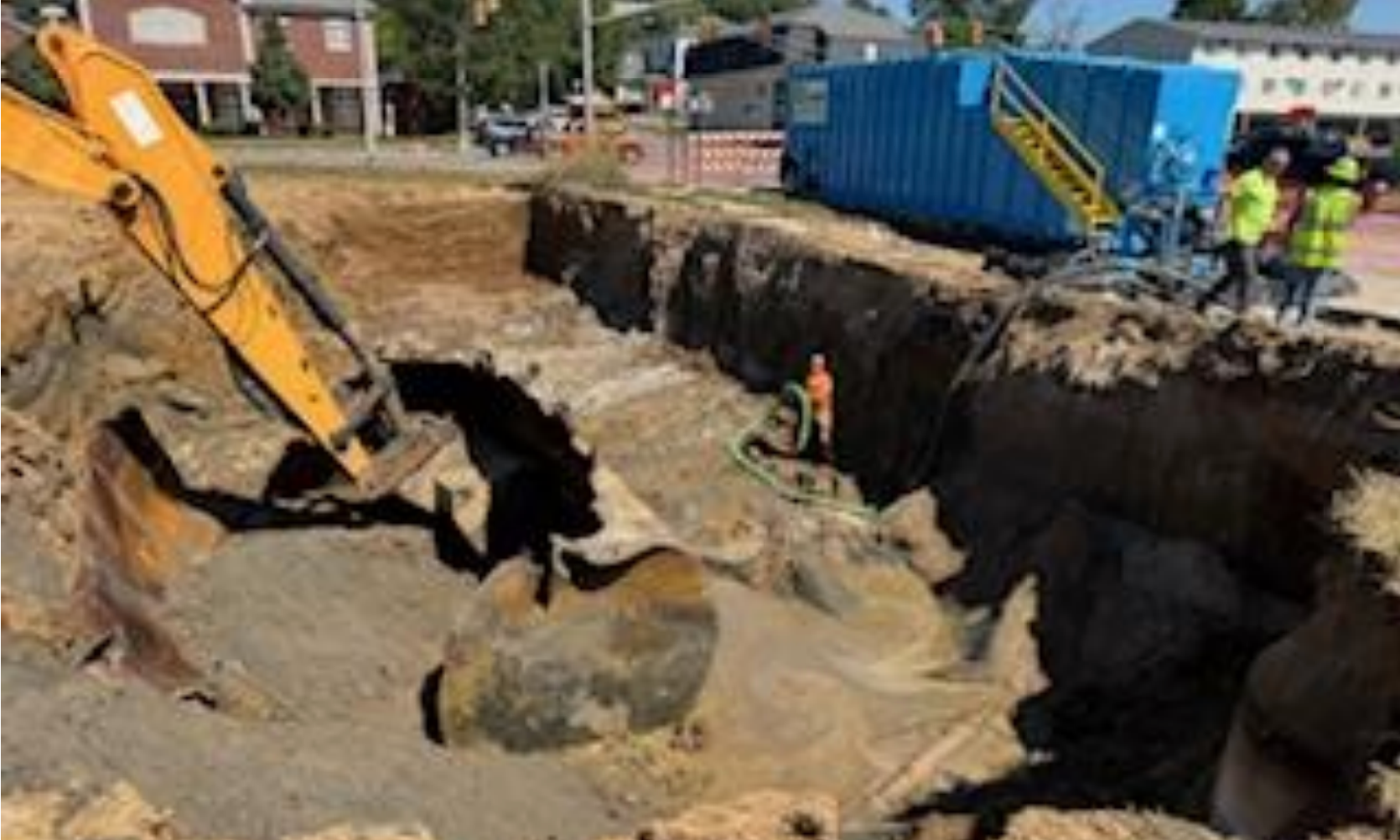
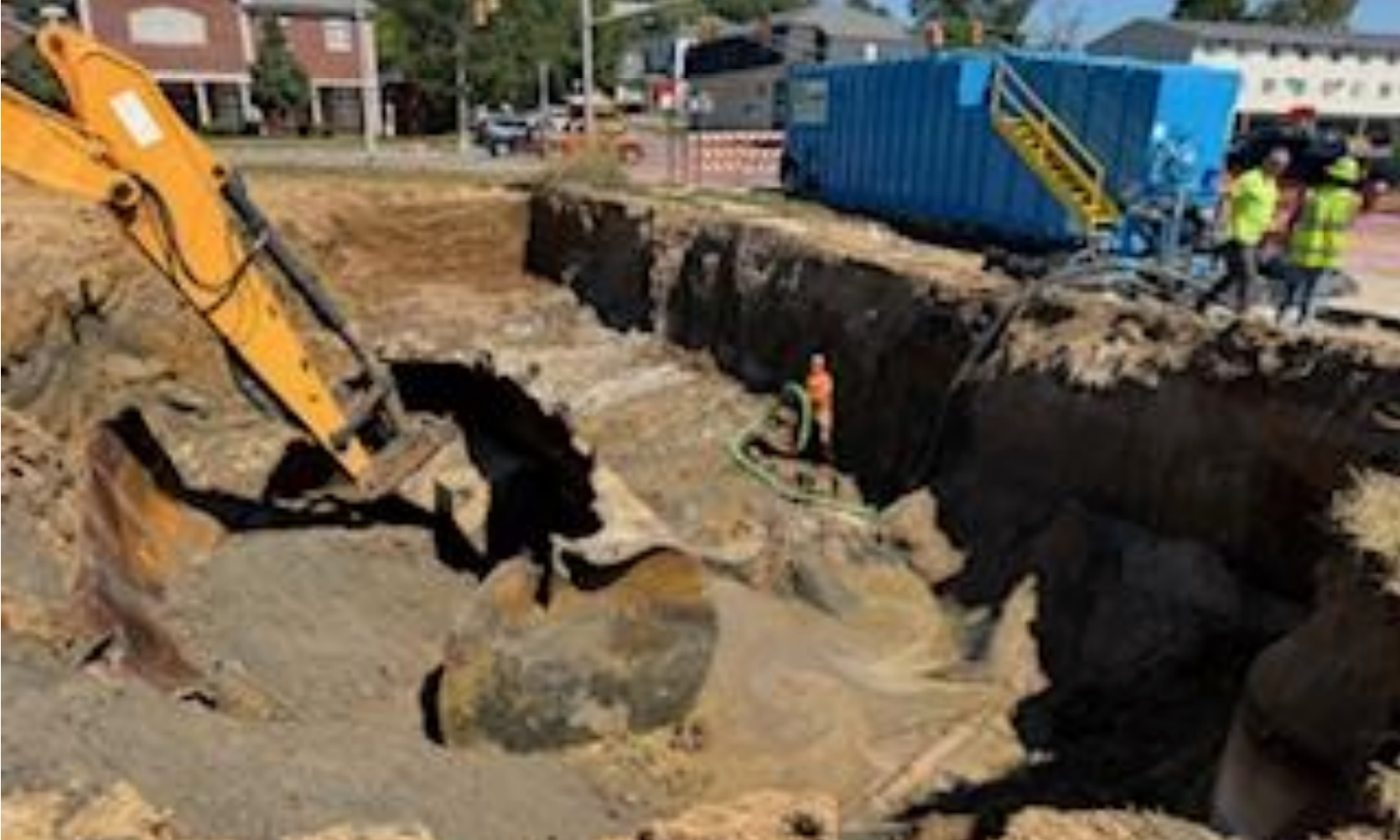
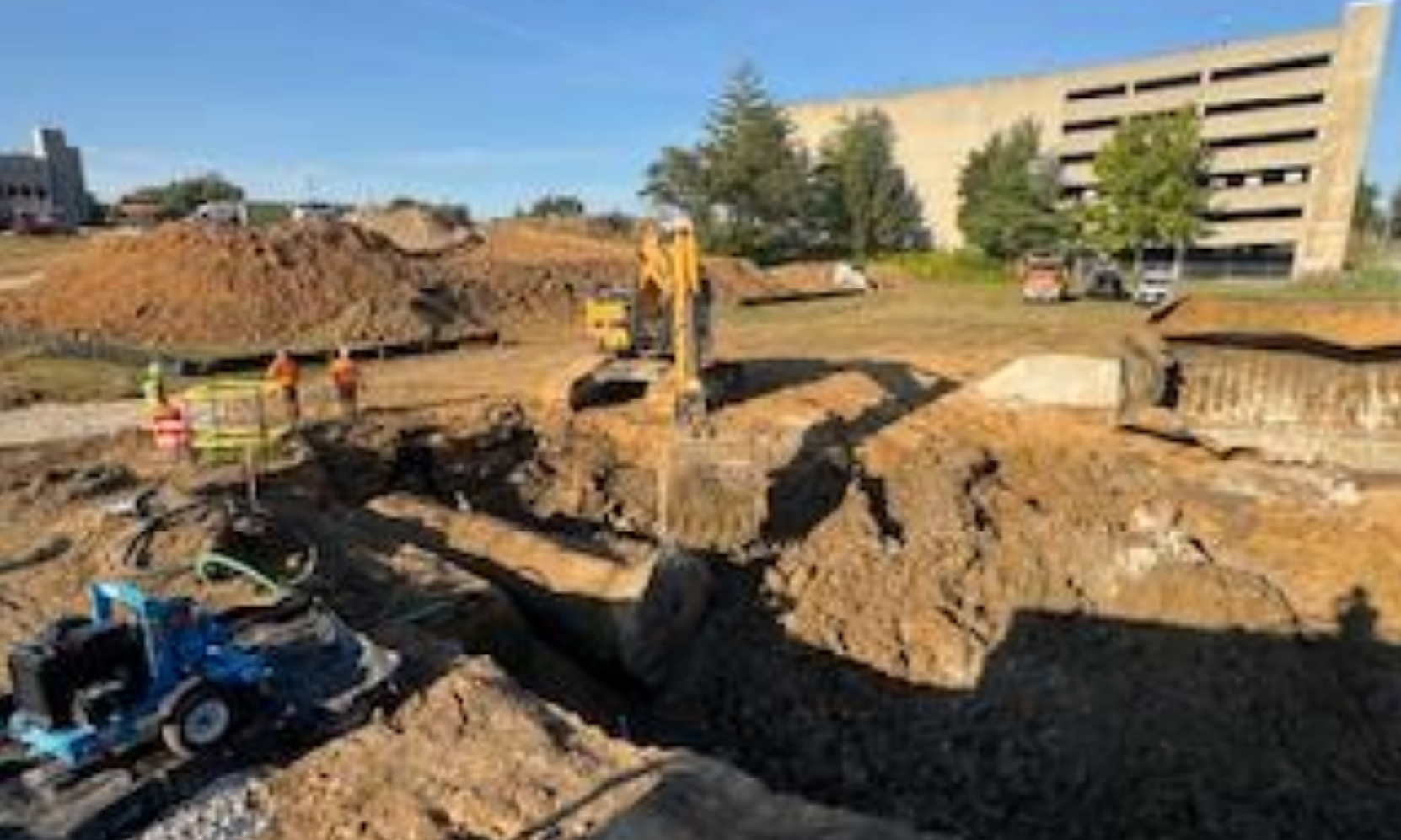

Photos (left and middle) show the excavation of three fuel tanks near 2nd and Rogers streets, part of the site of the Hopewell Development. The photo on the right shows mold growing inside the 714 S. Rogers building. Images are from the information packet for the Sept. 15, 2025 meeting of the Bloomington redevelopment commission.
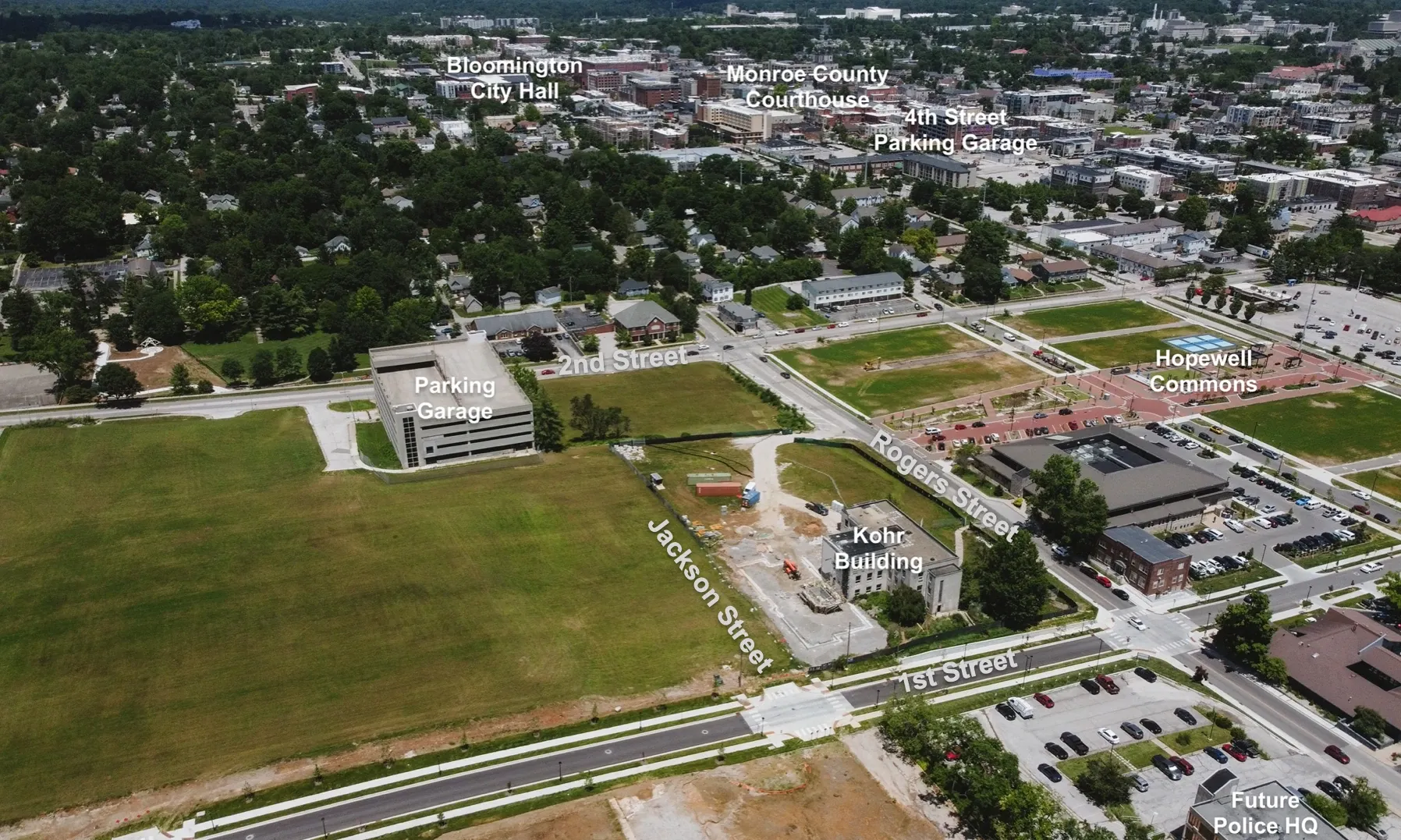
At its regular Monday meeting, Bloomington’s Redevelopment Commission (RDC) approved two significant measures to address environmental challenges at city-owned properties in the future Hopewell neighborhood, as part of continued efforts to prepare the site for future use.
The future neighborhood is the area in and around the site of the former IU Health hospital at 2nd and Rogers streets.
On a split vote, the five-member RDC approved an addendum to the city’s existing agreement with VET Environmental Engineering for mold remediation at the vacant 714 S. Rogers Street building, which is owned by the RDC. The change increased the not-to-exceed amount by $50,000, bringing the total to $75,000. The former Bloomington Convalescent Center building is slated for adaptive re-use as a new police station.
Dissenting was Randy Cassady, who noted that the RDC had at one point received a cost estimate of $250,000 for demolishing the building. “At some point, do we just pull the plug and build a new police station?” Cassady asked.
At its Monday meeting, the RDC also approved an addendum to a VET contract for environmental remediation at the Hopewell site of 2nd and Rogers streets. That’s after contractors discovered three underground fuel oil tanks filled with water, during excavation work to remediate contaminated soil. The original contract with VET for the petroleum cleanup was $152,486. The addendum added $63,404, bringing the total to $215,890.
Mold remediation at 714 S. Rogers
In her briefing of the commission about the 714 S. Rogers building, RDC director Anna Killion-Hanson said that when VET went into the building to do the cleanup that was approved under the $25,000 contract, workers found “there was mold growing even on steel.”
The building has faced persistent challenges stemming from water damage caused by vandalism, compounded by subsequent mold growth. The activity that demolished the other buildings south of 1st Street west of 714 S. Rogers accidentally cut the electric connection to the 714 S. Rogers building, Killion-Hanson recounted. Even getting the building electrified again had been a challenge, she said, which meant that the HVAC system was not in operation, leading to conditions ripe for mold.
Killion-Hanson pointed out that an additional challenge was posed by the fact that each room is individually heated and cooled. She summed up by saying, “It’s just been a recipe for disaster here.”
But Killion-Hanson indicated that the additional work that the RDC was being asked to pay for includes demolition work that would “need to be undertaken no matter what.” That’s in connection with the plan for the eventual adaptive reuse project to convert the building to a police station. In the shorter term, Killion-Hanson said, it’s important to “get some materials out of there so that we don’t have any conducive conditions for further mold growth.”
Two years ago, when the RDC was considering the demolition of the other buildings on the block, the 714 S. Rogers building was a part of the mix—to the point that the RDC had asked bidders for a quote on the building. The estimated cost for taking down the 714 S. Rogers building was around $250,000. It’s in that context that Cassady considered the item on Monday’s agenda.
Cassady indicated he has serious concerns about the ongoing costs and the lack of decisive action by mayor Kerry Thomson’s administration to execute on a plan to convert the building to a police station. Cassady was keen to get confirmation from Killion-Hanson that it’s still the administration’s intent at least eventually to pursue that option.
Cassady asked, “Does the administration still intend on potentially utilizing 714 South Rogers?” Her one-word answer: “Yes.” Cassady followed up: “Do we have any idea when something might occur on that?”
Killion-Hanson told Cassady that right now the administration is considering the finances: “What can we afford, what can’t we afford?” One factor to consider is how much is left in the life of the TIF (tax increment finance) district, which the RDC could rely on to help pay for the police station conversion. The city has estimated the cost of renovating the 714 S. Rogers building into a new police headquarters at around $23 million.
Also a factor is the impact of SEA 1, which is recent legislation that impacts how cities can bond for projects. “We’re looking at the whole picture. We don’t want to get in over our heads here,” Killion-Hanson said.
RDC president Deborah Myerson supported Cassady’s general concern, even if she voted for Monday’s agenda item. Myerson said she hopes for something like a quarterly check-in on the building with updates on the total costs for repair and maintenance so far, and a current quote for demolition. Killion-Hanson indicated that kind of update would be provided.
The current round of mold remediation at the 714 S. Rogers building stands at $75,000. Last year, the RDC approved $39,661 for water remediation and mold treatment of the building. That damage was caused, according to the RDC’s resolution, when “transients broke into the [building], turn[ed] on the water, which resulted in frozen and broken pipes and significant water damage …”
The tally of expenditures on the 714 S. Rogers building includes $8,560 for contract with Ann-Kriss, LLC to secure the building against break ins. The cost of security patrols of the Hopewell area, which the RDC has hired Marshall Security to do, could also be factored in on the cost analysis.
2nd and Rogers : 3 fuel tanks discovered, maybe more?
The Hopewell site, purchased by the city for $6.5 million, has been the subject of extensive environmental study, but the fuel tanks discovered during the recent soil remediation work at 2nd and Rogers streets were not detected by previous surveys.
“This site is one of the most studied sites that I’ve ever seen,” RDC director Anna Killion-Hanson told the commission on Monday. Three Phase 1 environmental reviews and at least three Phase 2 environmental reviews had been done, including radar to try to detect where any tanks might be, she said.
Dana Kerr, who is the assistant city attorney who provides legal support for the RDC, at one point served as the principal scientist for his own environmental services firm. Kerr said, “To be honest, these three tanks were up against the road. To me, there could be additional tanks …”
Kerr’s speculation was based on his review of Sanborn maps. “It looked like there were two generations of gas stations there. The first one is shown in 1947 I believe, and it had three tanks behind the building.” But the recently uncovered tanks were located along the roadway. That’s what led Kerr to the conclusion that there could be additional tanks that would be discovered.
The goal for all of the cleanup activity is to get a “closure letter” from IDEM (Indiana Department of Environmental Management), which is an official document the agency issues to confirm that environmental cleanup work at a site has been completed to the state’s satisfaction.
RDC member Randy Cassady pointed to the importance of having a signoff from IDEM about the completion of the work in the context of financing the kind of housing projects that the city hopes to see developed in Hopewell: “The banks will have to back it, and they’re going to be the ones that will be concerned.”
The RDC discussion on Monday also touched on the original purchase price of the land. RDC member John West said his recollection was that the $6.5 million deal with IU Health to purchase the former hospital site came with a cost reduction to reflect the fact that Bloomington would be accepting the property “as is.”

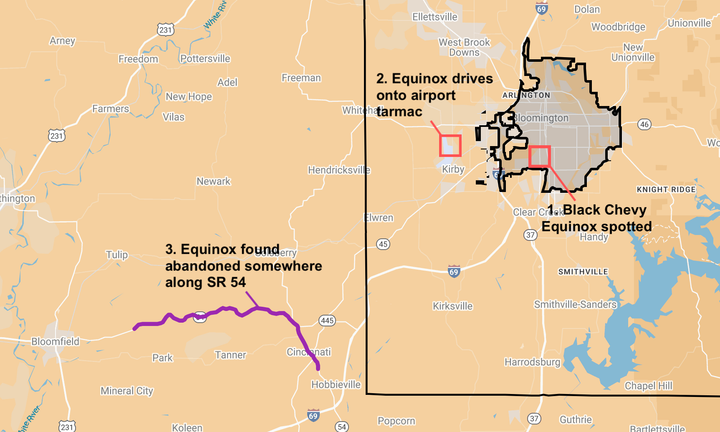


Comments ()